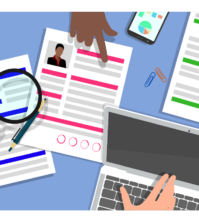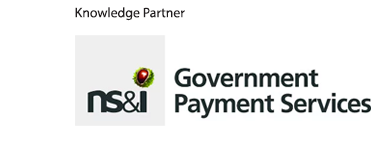How can public and civil services support people with disabilities into senior roles?

While progress has been made in many civil services to increase the representation of women and people from ethnic minority backgrounds in leadership positions, the number of senior civil servants who identify as disabled remains stubbornly low. Participants at a Global Government Forum webinar explored the reasons behind this and ideas for how to address it
For the last few years, Canada has led the world in boasting the highest proportion of women in the senior ranks of its public service. It is rightly proud of this statistic, yet it comes nowhere near matching this progress in its representation of people with disabilities.
In fact, Yazmine Laroche, Canada’s first deputy minister of public service accessibility, is the first and only visibly disabled deputy minister in the history of the Canadian public service. Her ambition is that people with disabilities are seen and valued for the talent and contribution that they bring but she is acutely aware that the service still has a way to go to achieve this goal. While 22% of the Canadian population lives with a disability and 9% are deemed to be “workforce available”, representation of people with disabilities among senior civil servants is currently just 5.6%.

The Canadian government has committed to an ambitious target of recruiting 5,000 people with disabilities by 2025, but Laroche knows that recruitment alone will not solve the problem. “We have to improve the workplace conditions, so our strategy also puts a huge focus on creating an enabling and welcoming work environment,” she said. Canada’s proud record on women leaders did not happen by accident, she points out – “it took years of deliberate and targeted activities”.
Australia is another country that is taking action to tackle the low representation of disabled people in the senior ranks of its civil service. Catherine Seaberg, assistant commissioner for inclusion at the Australian Public Service Commission, said that all state and territory governments are signatories to a 10-year national disability employment strategy. Currently, around 4.5% of civil service employees in Australia identify as having a disability, and the organisation aims to raise this to 7% by 2025. Among senior ranks, the proportion is currently just 3.7%, and Seaberg said that while some employees may not share their disability status because they don’t feel they need any adjustments in the workplace, she is concerned that others may be hiding their disability for fear that disclosure could harm their career.
Barriers to progress
Susan Scott-Parker is the founder of Business Disability International, which helps organisations in all sectors to improve disability equality. Scott-Parker said that as many as one in three people aged 50 to 64 will have a disability, so it was very likely that civil service organisations had many more disabled staff in their senior ranks than the low numbers declared would suggest. She agreed with Seaberg that some of people’s reluctance to disclose disabilities stems from a fear of discrimination and stigma, and concern that being upfront about their disability could impact their chances of promotion.

“Asking why they don’t take on that identity comfortably might give you some insights into what needs to change in the organisation,” Scott-Parker said. If the culture is one that focuses on doing the bare minimum to comply with equality and HR legislation, that will never create an environment where people feel confident enough to declare their disability and request adjustments. And that in turn will impact on the visibility of disabilities, and representation will remain low.
“You have to lift above legal compliance into the best practice that says, we will give everyone the tools and flexibility they need in order to do their best. We will remove obstacles when it comes to career development, and that includes disability-specific obstacles.”
To achieve this, disability and accessibility expertise must be properly positioned in the business and systems need to be designed so that they are efficient and non-stigmatising, Scott-Parker said.
Cristina Serrão, lived experience ambassador for NHS England and NHS Improvement, said that as well as fear of stigma, another reason why a person might not be open about their disability could be a resistance to being labelled. Laroche said that in Canada’s Office of the Chief Human Resources Officer, colleagues recognised this problem and so are transforming their whole approach to self-identification, and “making it more of a campaign where people are encouraged to have pride in their multiple identities”.
Kate Nash, CEO of PurpleSpace, a global business that builds disability confidence within organisations and connects networks across the world, cited the challenge of protecting and enhancing people’s personal brands as high-performing employees when they choose to identify with the experience of disability. They have to learn how to navigate “the soft bigotry of low expectations,” Nash said.
She added that even using “outdated” language such as disclosure and declaration supports such bigotry, because it “betrays a deep-seated belief that the human experience should be a secret”.
Signs that an employer takes it seriously
PurpleSpace recently polled its members and other people with disabilities about the signs they look for in an employer before choosing to share information about their disability. Five key clues were cited. First, they study whether the organisation listens to and learns from its own people, via networks or focus groups. Second, they look at the leadership’s attitude to hybrid and home working and the seniority of the post with which responsibility for digital access rests. Third, it’s whether the employer delivers workplace adjustments quickly and without fuss. Then, they look at whether the employer signs up to external levers such as disability inclusion collective the Valuable 500, or the International Day of Persons with Disabilities. And lastly, they check whether the organisation invests in disabled leaders in the same way that it invests in women leaders, ethnic minority leaders or LGBT+ leaders.
Nash said that persistent underinvestment in the personal development of people with disabilities is a real obstacle to improving representation. But Serrão hoped that two years of the COVID pandemic might deliver change on this, as organisations the world over will have to wrestle with the impact of long COVID on their workforce. They will be forced to consider how to “retrain to retain”, she said.
The real costs

The panel agreed that the perception that making reasonable adjustments for people with disabilities is expensive is another barrier that needs dismantling, especially in light of the move to hybrid working where many disabled people will need adaptations at two workstations.
Kate Nash pointed out that the cost to organisations of making reasonable adjustments for people with disabilities is probably much lower than the cost of employing women, as many will require maternity pay – and no employer would dare quibble about that. She made the point that such adjustments are not favours, but legal requirements. Scott-Parker agreed, adding that leaders and managers needed to understand that “this isn’t special treatment. It’s about empowering a team of people to do their best at work”.
Scott-Parker also urged leaders to consider the cost of not delivering an efficient workplace adjustment service: needless absenteeism, managing formal grievances and potentially litigation, an unhappy workforce, and the loss of good people who don’t feel comfortable being themselves.
Separate from HR
She also advised that responsibility for this agenda should not lie with HR. There should be a single place that everyone in the organisation knows is where you go to get your adaptations – and staff must not be asked to “prove” their disability to anyone. Laroche added that it also must not sit with the department that handles workplace conflicts, as it often does in Canada.
“What we found was that a lot of these requests were dealt with through the labour relations group, which is where conflict is dealt with in the workplace. Imagine you’re the person with a disability, and you’re being told you have to go to the place where they deal with grievances and problems when all you want is a height-adjustable desk or screen-reading software. Imagine the angst that creates for the individual.”

She said the Canadian public service was trying to change this by piloting a workplace accommodation passport for all government employees, so that accommodations accompany the employee as they proceed through their career.
Seaberg added that in Australia, each agency is encouraged to establish the role of disability contact officer that can help those with disabilities to navigate the system and access what they need to do their job.
Scott-Parker recommended that organisations create the senior role of chief productivity officer who ensures that people are given the tools they need in a timely and efficient fashion, and absenteeism and high staff turnover are reduced.
But Laroche warned against allowing one person to own the agenda, as that creates a risk that it gets attached to that individual and if they leave, things fall apart. The challenge is to embed it in your systems and processes, she said.
Importance of role modelling
Kate Nash said that having confident role models with visible disabilities at senior levels is “an incredibly important part of the process of believing and normalising human difference as a part of work”.
She cited an example of great practice at the UK Border Force, where as part of its strategy to improve the timeliness of delivery of workplace adjustments, it attempted to normalise the experience of disability through storytelling campaigns. “They invested in their people, they had some of their senior leaders talk extensively and candidly and unflinchingly about their personal experiences of disability, as a way of encouraging others to say, ‘it’s ok’.”

Australia’s disability employment strategy also features a sharp focus on raising the visibility of senior executives with disabilities, according to Seaberg. “You don’t aspire to be what you don’t see,” she said.
Christina Serrao added: “Just by being visible, by talking about it, little bit by little bit, and normalising it to a certain extent, it makes it a little easier for the next person.”
The panel agreed that while there were pockets of good practice all over the world, no civil service organisation was exemplary when it comes to inclusion for people with disabilities. But Laroche concluded that plenty of organisations are grappling with it and trying to be better: “It takes policies, it takes leadership commitment, it takes measurement, and it takes a relentless commitment to getting it done.”
The Global Government Forum webinar ‘Tap into your talent: supporting disabled people into senior roles’ was held on 28 April. You can watch the 75-minute webinar via our dedicated event page.





















